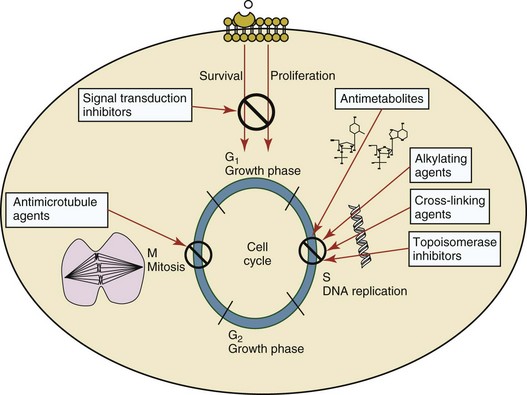Chemotherapy Drugs And Cell Cycle Biology Diagrams Cell-Cycle Nonspecific Chemotherapy. Kills cancer cells at all phases of the cell cycle. These work best when given in a "bolus dose." A bolus dose is a large dose, given in a short period of time. For example, the dose may be given once over 20 minutes. The cells don't always die right away. A cell may have to go through a few cycles of Keywords: chemotherapy, cell cycle regulation, drug delivery systems, combination chemotherapy, cancer therapy. 1. Introduction. Chemotherapy is currently one of the main methods of tumor treatment . However, there are still several obstacles to achieve the desired therapeutic effect. Some inevitable side effects such as nausea and hair loss

Chemotherapy class Examples Primary mechanism of action Additional mechanism of action; Antimicrotubule agents: Taxanes (paclitaxel, doxorubicin) Binding to interior surface of microtubules, impeding movement and function ()Altering of cell signaling and trafficking, slowing of cell cycle progression, inhibiting cell migration and invasiveness, disrupting tumor vasculature () Chemotherapy works with the cell cycle. Every time any new cell is formed, it goes through a usual process to become a fully functioning (or mature) cell. The process involves a series of phases and is called the cell cycle. Chemotherapy drugs target cells at different phases of the cell cycle. Understanding how these drugs work helps doctors How does chemotherapy affect the cell cycle? Different types of chemotherapy drugs attack cancer cells at various stages of the cell cycle. Some target a specific stage of the cycle. Antimetabolites and antifols, for example, target the S stage and interfere with the construction of the DNA molecule. Bleomycin, etoposide, and other agents

How Chemotherapy Drugs Work Biology Diagrams
The occurrence, development, and metastasis of tumors are closely related to the cell cycle. Cell cycle regulation can be synergistic with chemotherapy in two aspects: inhibition or promotion. The sensitivity of tumor cells to chemotherapeutic drugs can be improved with the cooperation of cell cycle regulation strategies. Cell cycle checkpoints operate as DNA surveillance mechanisms that prevent the accumulation and propagation of genetic errors during cell division. through either radiotherapy or chemotherapy,

The process of cell division, whether normal or cancerous cells, is through the cell cycle. The cell cycle goes from the resting phase, through active growing phases, and then to mitosis (division). The ability of chemotherapy to kill cancer cells depends on its ability to halt cell division.
